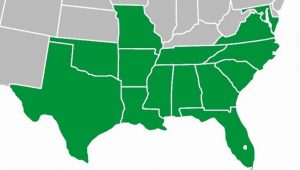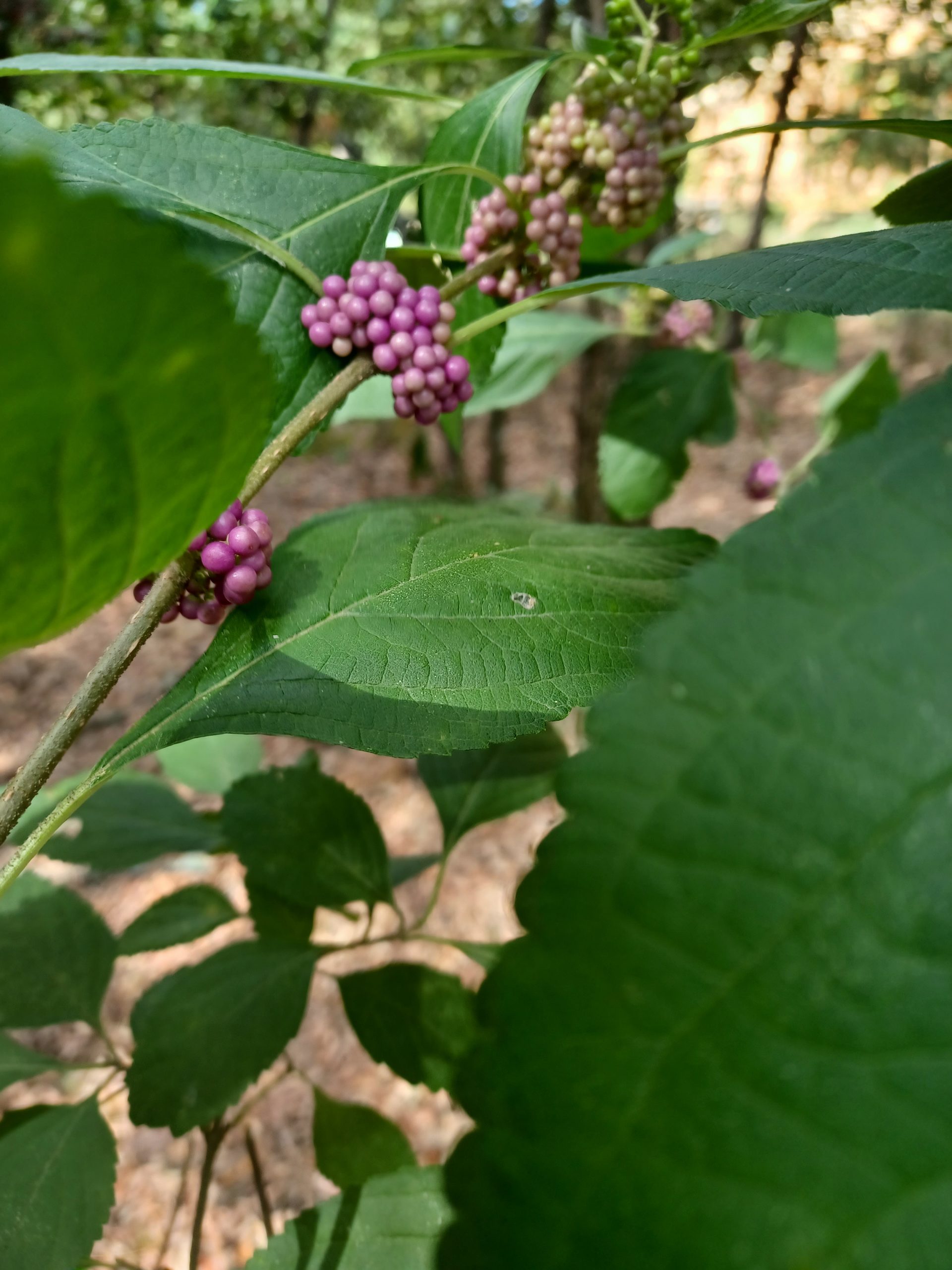In a woodland shade garden, understory shrubs play an important role in filling the space beneath taller trees while adding structure, texture, and seasonal interest. These bushes are naturally adapted to lower light conditions and help create a layered, natural look. Native understory plants like American Beautyberry, oakleaf hydrangea, spicebush, and coralberry not only thrive in partial to full shade but also support local wildlife by providing food and shelter.
While walking the property and planning out a woodland shade garden, I found several native American Beautyberry plants growing naturally. I decided to keep them and work them into the garden design.
The native beautyberry grows in a number of locations in the U.S. (see map below)

The bright purple berries are striking, but more importantly, they provide food for wildlife—especially birds. While the berries are technically edible for people, I’m growing them mainly for how they look and their benefit to the local ecosystem.
I didn’t prune the shrubs this past winter, but after doing some reading, I learned that cutting them back in late winter can help them grow fuller and more compact. That’s something I plan to do next time around.
A helpful resource I found is a video by Cory Ames, a Texas gardener who shares practical advice on native plants. His video on beautyberry covers everything you need to know in a clear and useful way. You can watch it here:
▶️ American Beautyberry: A Native Plant You’ll Love
Even though Cory gardens in Texas, the information in this video applies to most areas where beautyberry grows. I also appreciate that he speaks from real experience, without a lot of filler or AI-generated content.
If you’re thinking about adding native plants to your garden, beautyberry is a good one to consider.
